Title photo ‘Cuthona yamasui, Tulamben,bali,indonesia’ by Yansu JunK
Nudibranch, meaning ‘naked gills’ are an order of marine gastropod of over 3000 species! They breathe through a ‘naked gill’ shaped into branchial plumes (simillar to the alveoli of a human lung) but external to their bodies
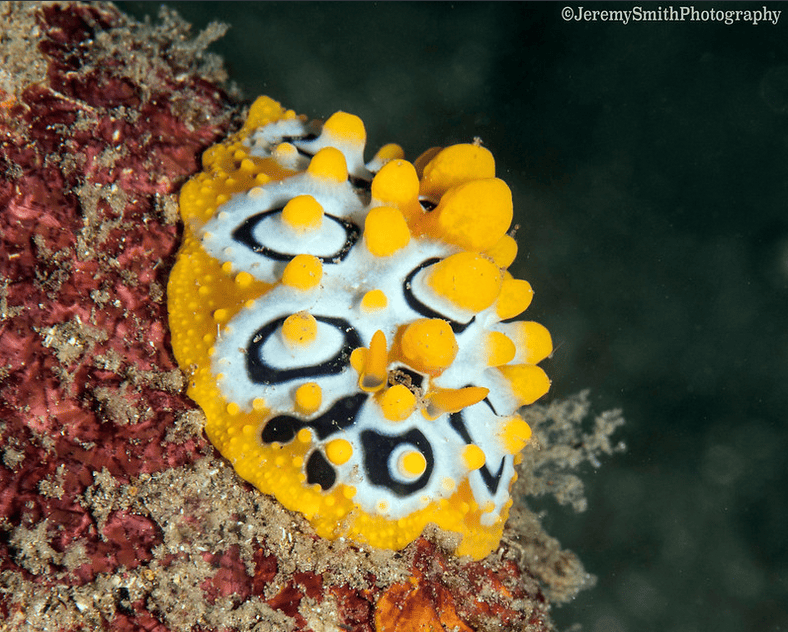
Above, ‘Ocellated Phyllidia, Phyllidia ocellata, Alor, Indonesia’ by Jeremy Smith
They are soft bodied, slug like creatures and are noted for their bright colours and extravagant body forms. Their nicknames reflect their fabulous forms- “clown”, “marigold”, “splendid”, “dancer”, “dragon”, and “sea rabbit”
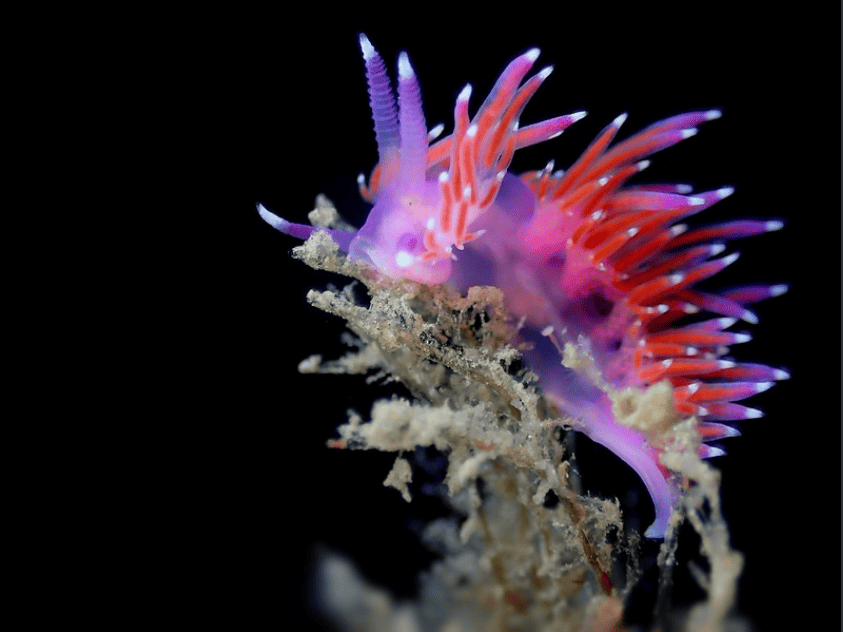
Above, ‘Flabellina affinis’ The Mediterranean by Verheyen Stefan
They are found worldwide including the Arctic and Antarctic, through temperate to Tropical sea waters (though some species can live in brackish waters) They can be found at all water depths from warm shallow reefs (where the greatest number of species are found) to depths of 700 metres. One species was discovered at a depth of 2500 metres!
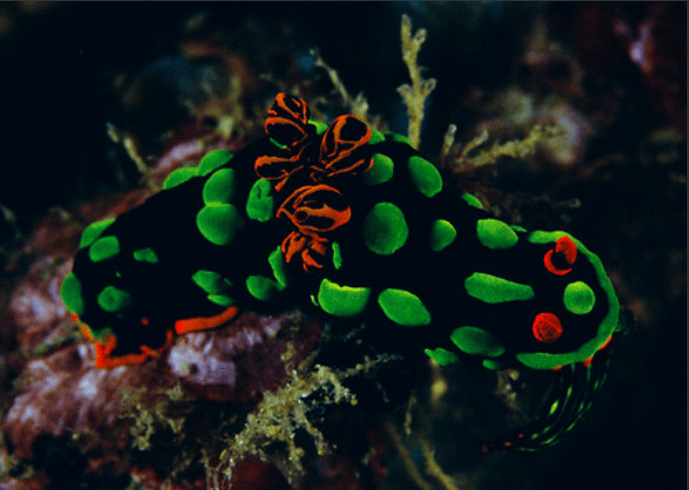
Above, ‘Nembrotha kubaryana). Lembeh, Indonesia’ by Trent Burkholder
Species can vary in size from 4mm to 40cm long, and are oblong in shape. They can also be thick or flattened, long or short, ornately colored or drab to match their surroundings!
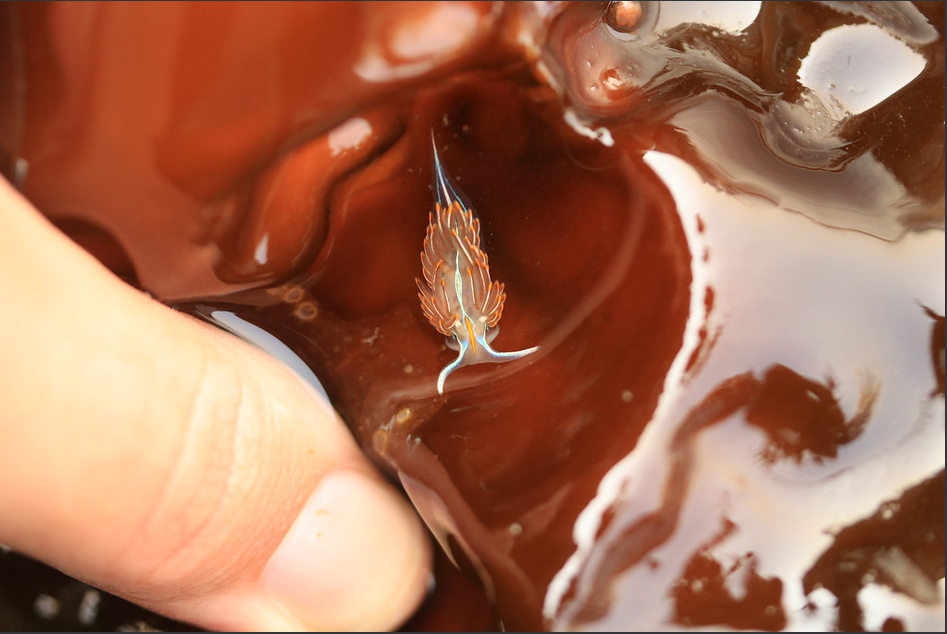
Above, ‘Hermissenda crassicornis, Point Defiance Marina, Tacoma’ by Zachary Hawn
Their eyes are small and simple, and can only discern differences in light and dark. Instead they have tentacles on their heads which act as sensory organs being sensitive to touch, taste and smell!
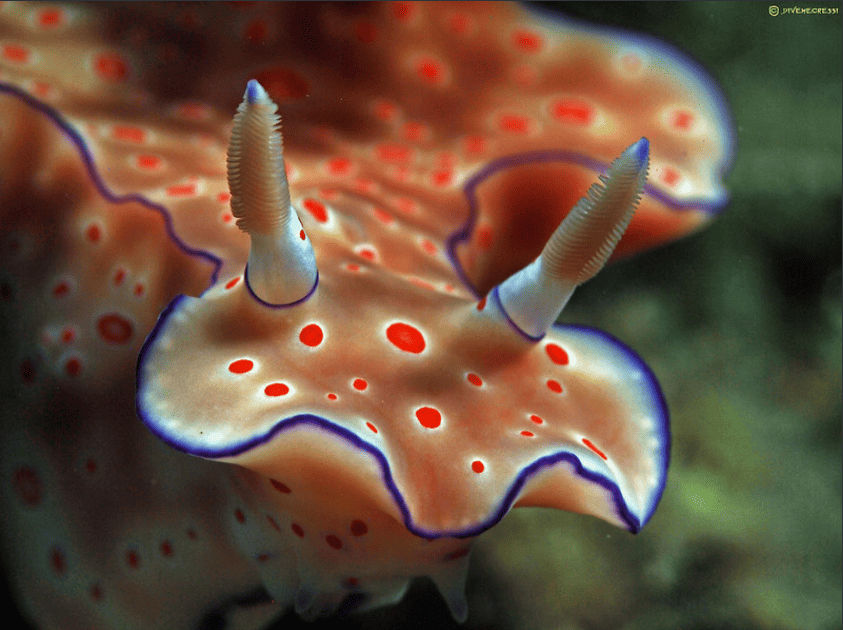
Above, ‘Ceratosoma trilobatum, Indonesia, South Molucces - Ambon’ by divemecressi
They are carnivorous predators, usually feeding on sea sponges, anemones, corals and barnacles, although some are cannibalistic!
They have evolved defense strategies to protect them from being eaten, including camouflage to look like sea sponges, chemical defenses complete with warnings. Some species eat hydrozoids (a relation of jellyfish) and then store the stinging cells that pass undigested through their gut to their rear end…any predator trying to bite one of these nudibranchs will end up with a painful sting!
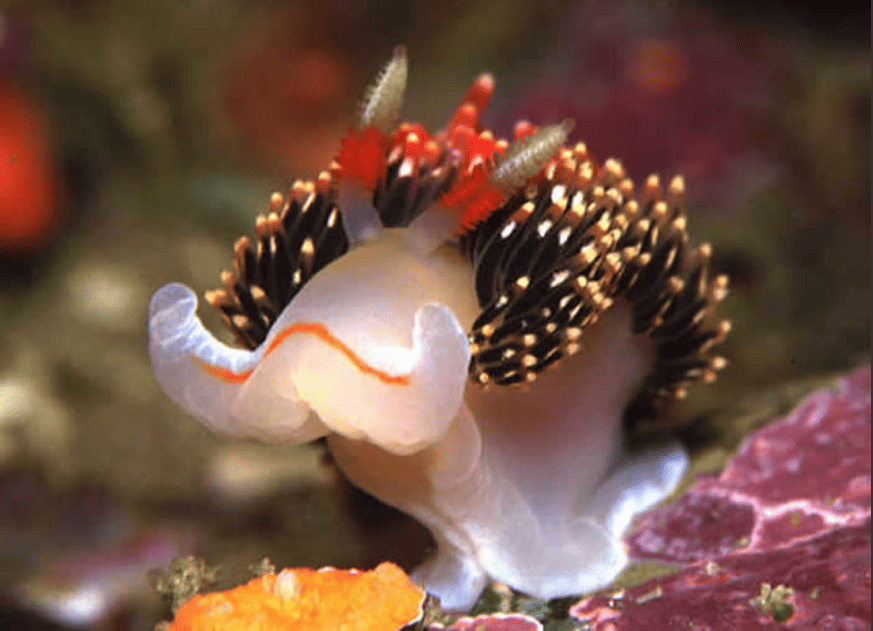
Above, ‘Phideana hiltoni’ by Ken Bondy
They are hermaphrodites (both male and female) and their sex organs are on the right side of their bodies. They still need to reproduce sexually though. When they meet a suitable partner they will engaged in a ‘courtship dance’ lasting for a few minutes. They then lay eggs in a long slimy ribbon, from as few as a couple to up to 25 million! source
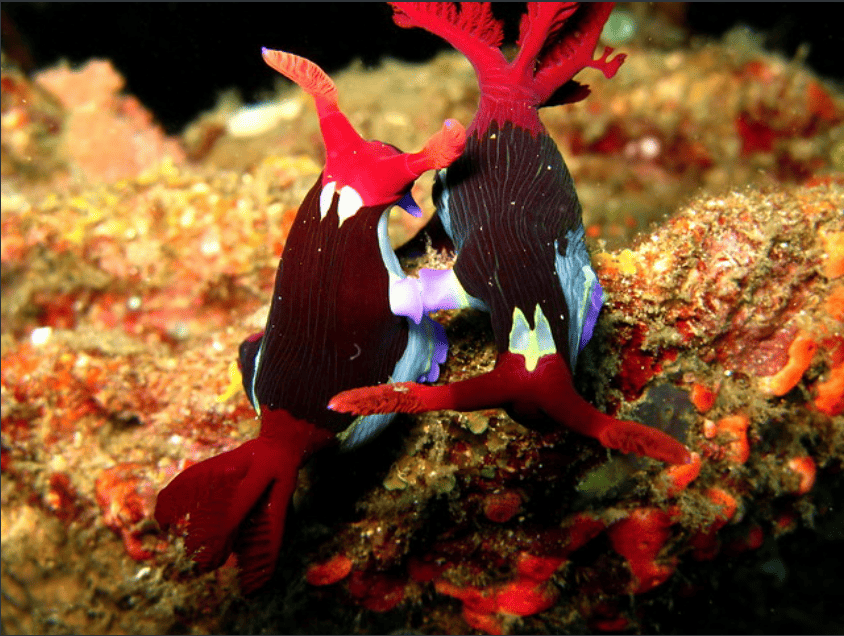
Above, ‘Consummation’ by lee Ming
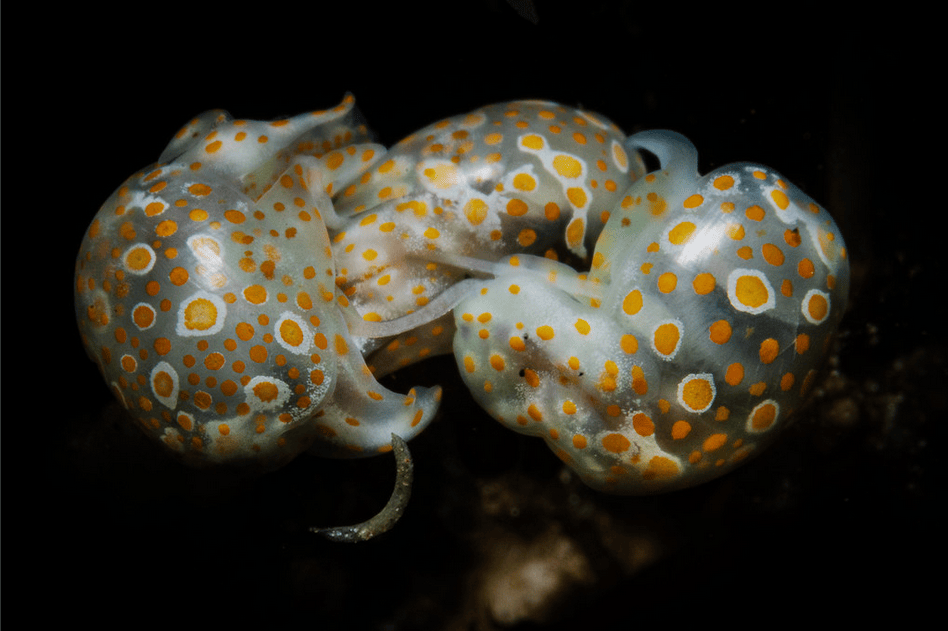
Above, ‘Threesome having fun, Lamprohaminoea cymbalum, Tulamben Bali’ by Ludovic
More nudibranchs to enjoy…
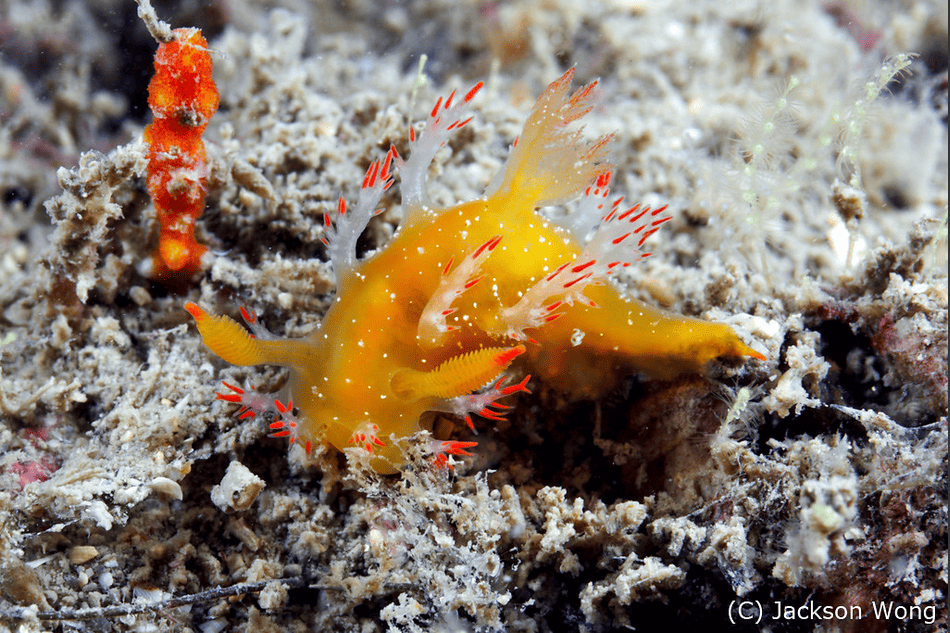
Above photo by Jackson Wong
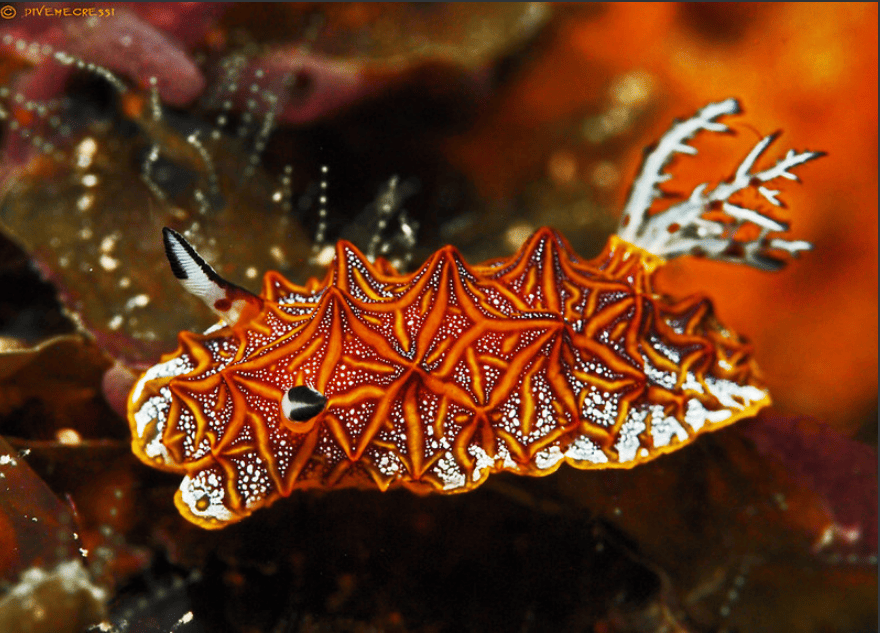
Above, ‘Halgerda tessellata, Philippines - Malapascua’ by divemecressi
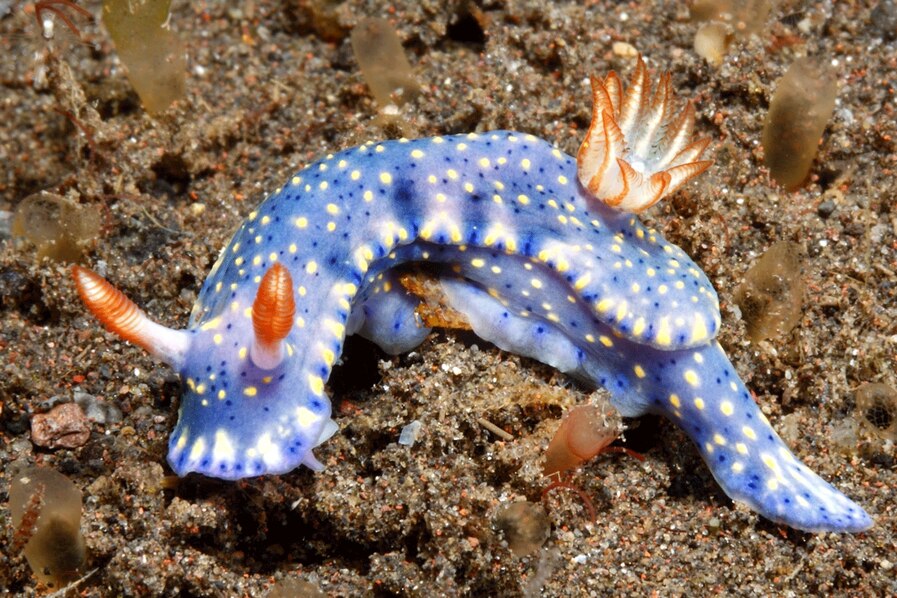
Above photo by Carol Buchanan
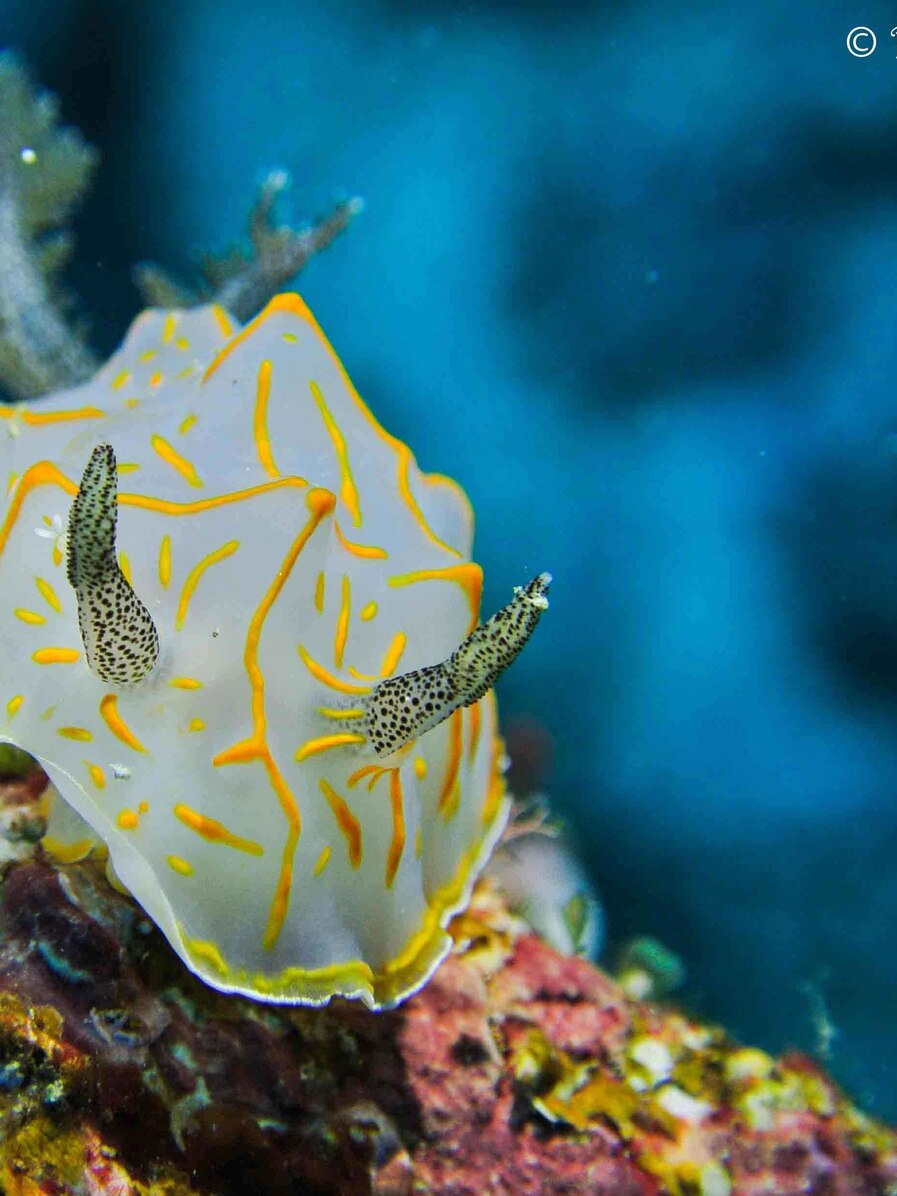
Above photo by Barbara Stevens
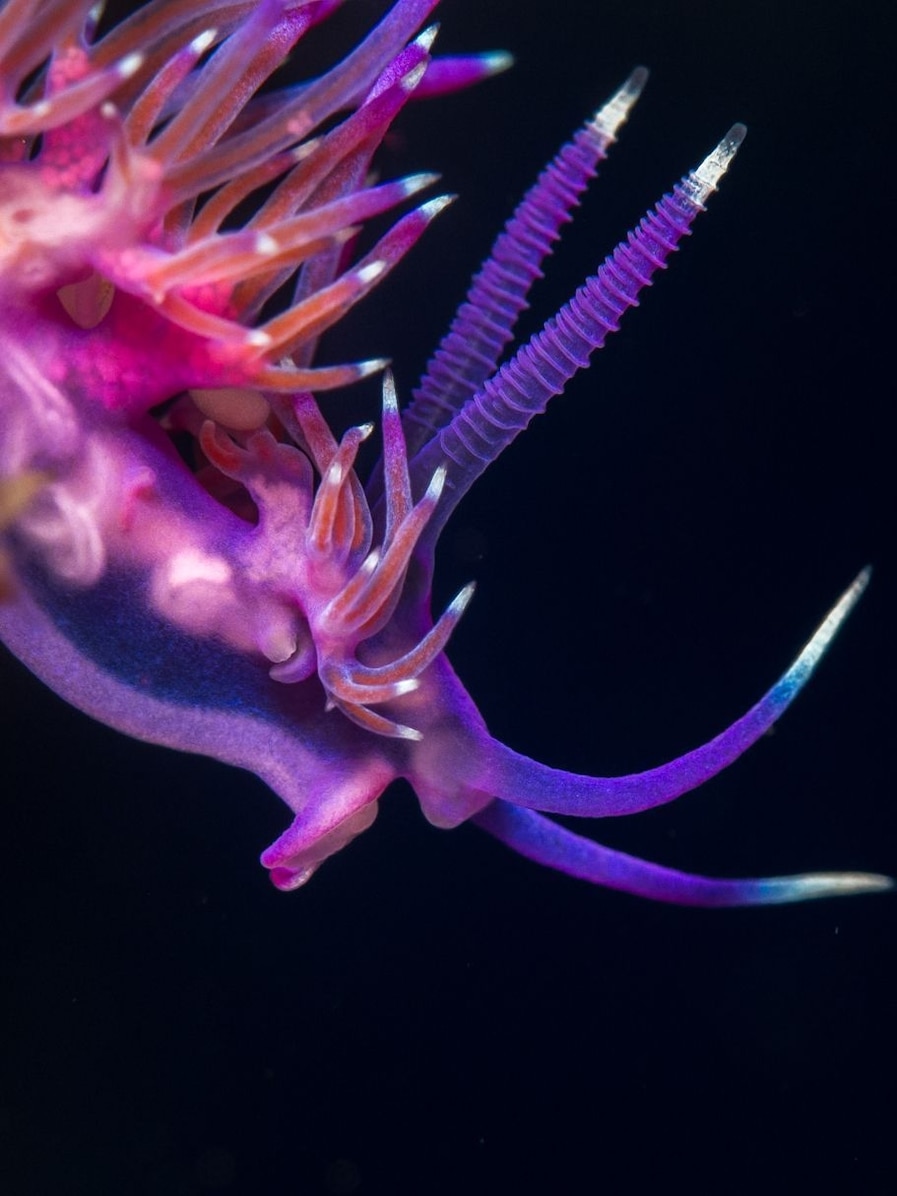
Above photo by Joan Ribas
All info from here, here and here
As always, I’m not an expert I just like sharing fun things…any errors leave a comment, and I’ll edit my post, cheers!
edit, link
man, these little dudes are dope
Fabulous aren’t they?
Are these photos taken under UV light?
From what I can tell, no. The majority of photos are taken by scuba divers in the nudibranchs natural habitat, others may be from aquariums etc
Nudibranchs really do look like this!
I found this where UV light is used for night dives for finding hard to locate (camouflaged creatures) it does mention that some specimens are carefully taken ashore for ID and probably additional closeup photography and study
These 2 photos of Cats Eye Zoa show the differences between normal light and UV (and have given me an idea for a future post!)
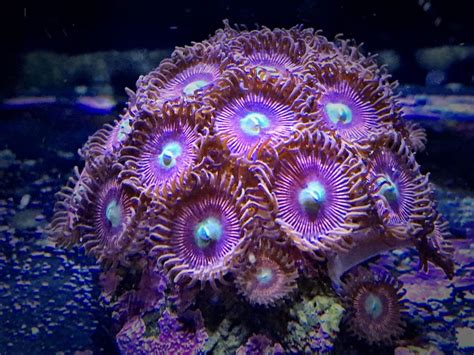
Normal light
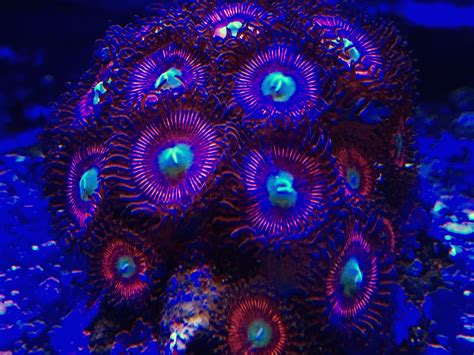
UV light
Wow, thanks! It’s a pity lemmy doesn’t feature a follow use function, your posts rock!
Thank you, you can always stalk me from a distance lol…I’m finding that mander has some really nice communities which are more receptive to my wildlife posts, so you’ll see me over here from time to time 😀
